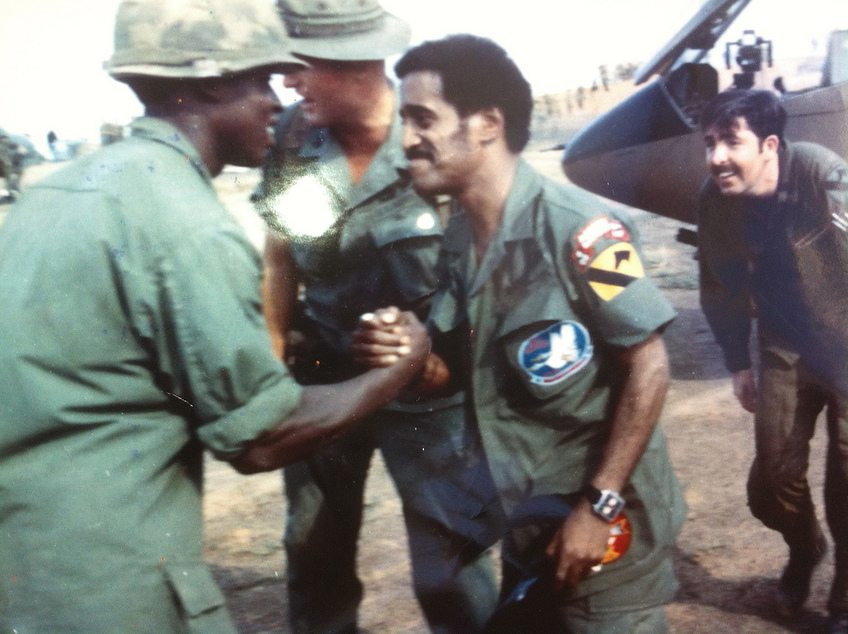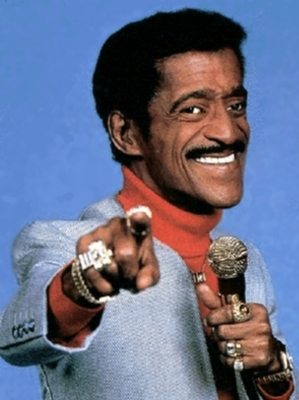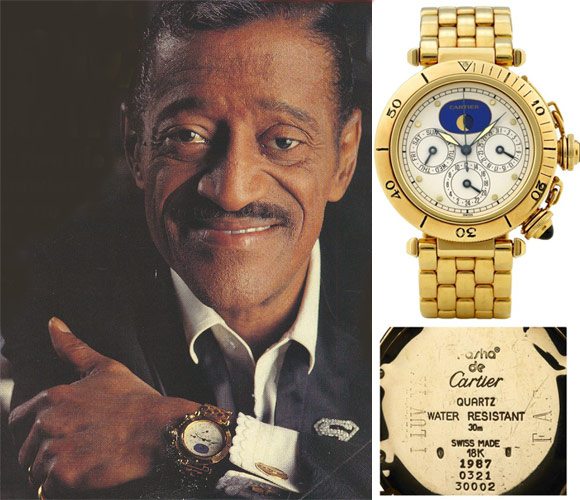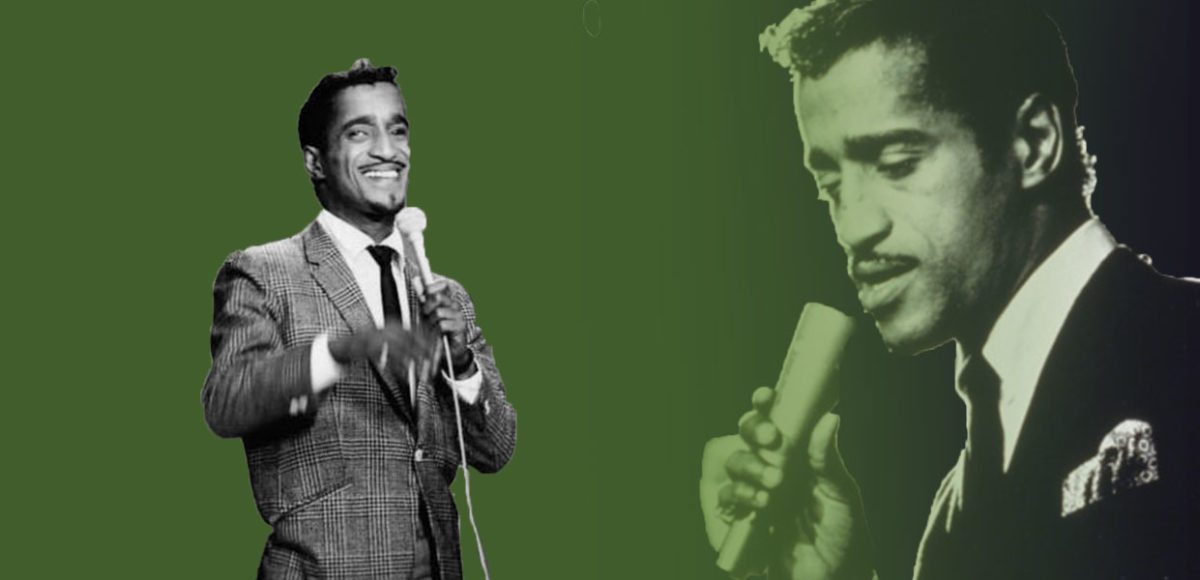Sammy Davis Jr: The Early Days
The odds were against him. He was a black entertainer, pursuing his craft during the pre-Civil Rights era. Yet, against racism and discrimination, Sammy Davis Jr. prevailed as one of the most successful performers of his time.
During his formative years, Davis traveled with his father and uncle as the Will Mastin Trio. He learned to dance, sing, perform comedy, and play several instruments with ease. There was no denying that Davis had natural talent. He became the star of the show, quickly.
Serving His Country

Sammy Davis Jr. Wearing a Monaco: From Watchonista
By the time Davis was a teenager, the country was in the midst of WWII. He was drafted. During his stint in the army, Davis faced violent racial prejudice. He was abused by many of his white peers, and one even broke his nose. Eventually, he transferred to an entertainment regiment where he found more acceptance than in his previous unit.
After the war, Davis returned to his career, performing both with his father and uncle as well as on his own. In 1947, at the age of twenty-two, he finally got his big break. This is when the Will Mastin Trio opened for Frank Sinatra. Davis gained recognition for his natural talent, which opened new doors for the proficient entertainer.
His Career

In 1954, a life-changing car accident derailed his career. Davis suffered serious injuries, the worst of which was the loss of one of his eyes. The experience prompted him to adopt the Jewish faith.
As soon as Davis recovered, he was back at it. He released his first two albums, secured headlining performances in New York City and Las Vegas, and returned to film.
By the 1960s, Davis had achieved individual stardom. During this decade, he also became a member of the illustrious Rat Pack, along with Sinatra, Dean Martin, Peter Lawford, and Joey Bishop. The group performed together both on stage and on screen in several films.
The 1960s are remembered as a crucial time in the United States for racial politics. They also arguably marked the peak of Davis’s success. He used his celebrity status to make a statement in the fight for racial equality. He joined the March on Washington in 1963 and refused to perform at racially segregated venues. Davis continued to work in music and film up until he lost his battle to throat cancer in 1990 at the age of 64.
His Watches

Sammy Davis Jr. wearing his Cartier Pasha from Frank Sinatra
Throughout his life and career, he was a bit of a watch connoisseur. Davis was primarily a Rolex man, owning classic models like the Rolex Datejust as well as more customized models, like a Submariner body paired with a President bracelet and diamond bezel.
In addition to his Rolexes, there are a couple other standouts in his collection. The first is a yellow gold Cartier Pasha from Frank Sinatra. It is engraved “Sammy, I Luv Ya, F.A.S.,” and sold at auction in 2009 for $12,600. Another is a Heuer Monaco. Although Steve McQueen made the model famous in the film Le Mans, Davis was one of the first entertainers to wear it. It later sold at auction for $21,600.
Davis’s affinity for fine watches comes as no surprise. The famed entertainer didn’t just have a colorful array of talents—he had a bold sense of style. His distinct and somewhat ornate collection of timepieces perfectly accessorized his vivacious spirit and vivid presence in pop culture.
Check out our installments of our Profiles in Time Series.
Get More Articles Like This in Your Inbox
We're constantly creating great content like this. So, why not get it delivered directly to your inbox? By subscribing you agree to our Privacy Policy but you can unsubscribe at any time.






